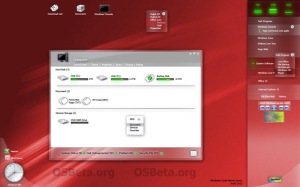In separate moves, Microsoft has released its Visual C++ 2008 Feature Pack but discontinued extended support for the Visual Basic 6.0 IDE.
The feature pack had been available in a beta release since January, said S. “Soma” Somasegar, senior vice president of the Microsoft Developer Division, in his blog this week.
“The Feature Pack provides several exciting features for C++ developers, such as a major update to MFC (Microsoft Foundation Class) and an implementation of TR1 (Technical Report 1). Using the included MFC components, developers can create applications with the ‘look & feel’ of Microsoft’s most popular products — Microsoft Office, Visual Studio, and Internet Explorer,” Somasegar said.
TR1 is a document that featured a Visual C++ implementation with extensions to the C++ ISO standard. Microsoft’s implementation of TR1 contains such features as regular expression parsing and sophisticated random number generators.
Also included in the feature pack are a component for the Office 2007 Ribbon Bar, Visual Studio docking, auto hide windows, and Windows Vista theme support.
The feature pack is downloadable by any Visual Studio 2008 Standard or above customer, Somasegar said.
Also this week, Microsoft ended extended, paid support for the Visual Basic 6.0 IDE, which is more than 10 years old.
“If you haven’t converted all your apps to .Net, shame on you, but don’t freak out. Microsoft will continue to support the VB 6.0 runtime for all existing application in all the next versions of the Windows OS, including Windows Server 2008 and Vista,” said Microsoft’s Jeff Nuckolls, a technology specialist, in a blog entry from last week. Nuckolls still advised that users devise a migration plan.
An online petition in 2005 sought to save Visual Basic 6.0 and Visual Basic for Applications. Still available, that petition has gathered 13,341 signatures as of Wednesday afternoon. A Visual Basic user who had participated in the petition drive downplayed his need for support of Visual Basic 6.0 Wednesday afternoon.
“‘Support’ is not something I need or have needed outside the peer support of other VB developers,” said Visual Basic user Don Bradner. “Now if it gets to where I can’t write a VB6 app or my VB6 apps won’t run, that’s a lot different; it is also likely to be a long way into the future.”


 Hewlett-Packard unveiled its Compaq 2133 ultraportable laptop, which uses a C7-M microprocessor from Taiwan’s Via Technologies instead of a chip from Intel.
Hewlett-Packard unveiled its Compaq 2133 ultraportable laptop, which uses a C7-M microprocessor from Taiwan’s Via Technologies instead of a chip from Intel.



